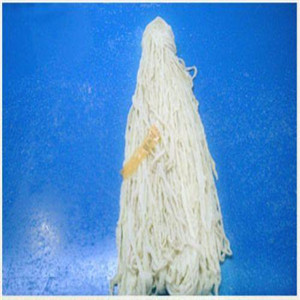The evaluation of casing quality is a systematic project, and the following "14 quality evaluation items" can be reasonably used as the basis for the evaluation of casing quality.
1. Barrier property of casings: refers to the degree of barrier to oxygen, water vapor and fragrance. Good barrier property can provide a longer shelf life and shelf life for sausages, avoid return due to deterioration of sausages during the shelf life, and improve/increase the freshness and aroma of sausages without loss.
2. Rationality of casing structure: reasonable structural design of casing can provide an ideal package for sausage.
3. Casing film strength: good mechanical strength can meet the requirements of various filling punch machines, thus reducing the consumption of casing film during use.
4. Stability of shrinkage rate: it refers to the consistency of the shrinkage rate of the same roll or batch of casings. If the shrinkage rate fluctuates more, it will lead to uneven length and thickness of sausage of the same specification, which will bring you a lot of trouble in packing and sales.
5. Color uniformity: For colored casings, even color can add luster to the appearance quality of sausage, make it beautiful and attract consumers' attention.
6. Openness of casings: good or bad openness is very important for sausage filling. If the opening is not good, the casing and filling will be difficult, which will directly affect the working efficiency of operators.
7. Specification accuracy: it means that the deviation of casing diameter and thickness should be controlled within a strict range. On the one hand, inaccurate specifications will cause uneven thickness of sausage, and excessive thickness deviation will also cause sausage bending and performance degradation.
8. Transparency of casing film: for transparent casing film, good transparency is very important for high-quality sausage. It can make consumers clearly see the meat texture of sausage, attract consumers to purchase, and enhance consumers' impression of the product.
9. Soft and hard handle: good handle will make it easy for you to use. After filling, sausage has a strong meat feeling. For molded ham, soft casings can make its shape sharp and smooth. On the contrary, if the edges and corners are sharp and hard, it is easy to make the product water out.
10. Brightness of casing film: make sausage very bright and dazzling on the shelf, which is easy to attract customers.
11. Meat stickiness of casing film:
(1) Refers to the meat stickiness of the casing film, which can reduce the folding of water in the sausage and prevent the taste of the sausage from getting worse.
(2) Refers to the degree of adhesion between the layers of the casing film, which makes the casing structure stable and performance stable.
12. Bonding effect between layers: refers to the degree of bonding between layers of the casing film, which makes the casing structure stable and performance stable.
13. Film roll flatness: reflects the thickness uniformity of the casing film, but can give a comprehensive evaluation of the product.
14. Packing tightness: the outer packing of casings should be tightly sealed on the one hand to prevent moisture absorption of casings; The box is solid and reliable to prevent the casing from being damaged and keep the casing under good protection.
For sausage processing, casing may be a step on the sausage production and processing line, but ignoring its importance may cause many troubles. Then you must take comprehensive consideration on the choice of casings. On the one hand, choose high-quality casings with good cost performance, and on the other hand, choose casings that meet the requirements of your sausage production. At the same time, pay attention to the use method to make the casings play their due role and bring you considerable economic benefits.



